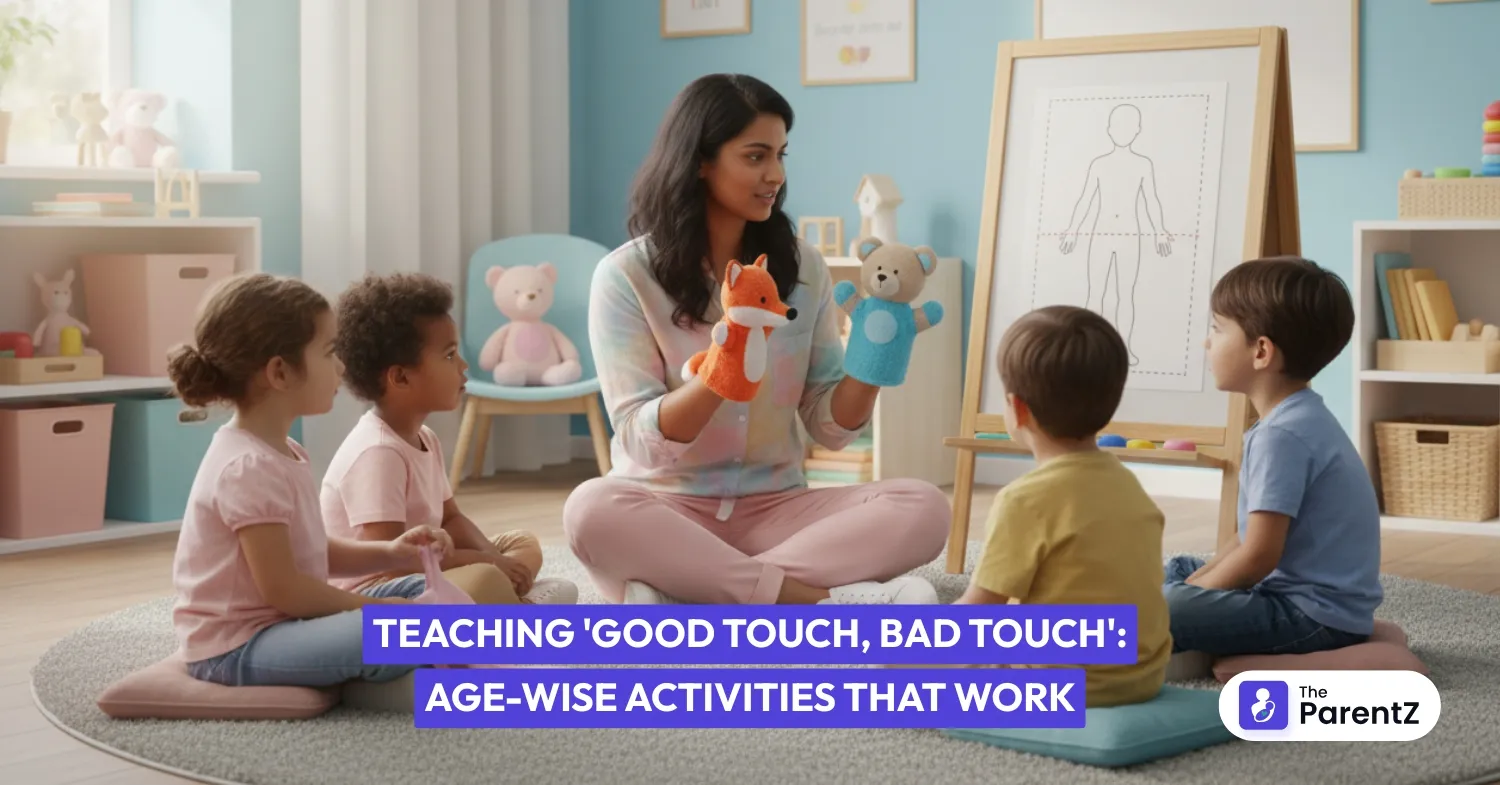Let's talk about something most parents avoid until they absolutely can't anymore. Teaching kids about good touch and bad touch often feels overwhelming. You know it's important, but where do you even start? And how do you explain it without scaring them?
But we need to accept that this conversation is just like teaching your child to look both ways before crossing the street. It's not about creating fear. It's about giving them information that keeps them safe.
Why You Can't Put This Off
You might be thinking your child is too young. Or that having this talk will steal their innocence. Many parents feel this way. But body safety education doesn't steal innocence; it protects it.
Child safety experts tell us that kids who understand body boundaries are more likely to speak up when something feels wrong. And that's really what every parent wants; not scared kids, but informed, confident kids who know they can come to you with anything.
The uncomfortable truth is that most children who face unsafe situations know the person involved. It's rarely the stranger we warn them about. It's often someone familiar, someone trusted. If you don't give your kids the words and confidence to recognize uncomfortable situations, you're leaving them without the tools they need most.
Ages 2-4: Keep It Simple and Natural
At this age, you're not having big, serious talks. You're building a foundation. Keep things simple and weave these lessons into daily routines.
What actually works:
- Use correct names for all body parts. Yes, including penis, vulva, and chest. Say them as casually as you say elbow or knee. This removes shame and gives children the proper vocabulary they'll need.
- Teach the concept of private parts: "These are the parts covered by your underwear. They're private and belong to you."
- Introduce the "bathing suit rule"; if a bathing suit covers it, it's private.
Let your toddler wash their own private parts as much as they can. This teaches them ownership of their own body from the start.
Ages 5-7: Build on What They Know
Now your child can understand more detailed concepts. They're in school, having playdates, and spending time away from you. This is when you add more layers.
What actually works:
- Explain good touch versus bad touch clearly: "A good touch makes you feel safe and happy, like a hug from grandma or holding hands with a friend. A bad touch makes you feel scared, confused, uncomfortable, or just wrong inside your tummy."
- Teach them that some touches start good but become bad, like tickling that continues after they say stop.
- Be crystal clear: "If anyone touches your private parts, asks you to touch theirs, wants to show you pictures of private parts, or wants to take pictures of you without clothes, you tell me right away. You will never, ever be in trouble for telling me."
Try this activity: Use dolls or stuffed animals for role-play. Ask your child to show you where the bathing suit rule applies to their teddy bear. Then practice scenarios: "If someone asks Teddy to keep a touching secret, what should Teddy do?"
Let them practice saying "No, I don't like that" in a loud voice. Let them practice coming to tell you immediately. Kids remember what they physically practice, not just what they hear.
Ages 8-12: Have Real, Direct Conversations
These kids are handling more independence. They're online, at friends' houses, maybe going to sleepovers. They need straight talk, not sugar-coated messages.
What actually works:
- Discuss consent directly: "Your body belongs only to you. No one should touch you in ways that make you uncomfortable; not for a photo, not as a joke, not for any reason. And you should never touch someone else in ways they don't want either."
- Address tricky situations head-on: "What if it's someone we know and trust? What if they say it's a game or a special secret? What if they say you'll get them in trouble? None of that changes anything. It's still wrong, and you still tell me."
- Talk about online dangers: "If anyone online asks for photos of you, wants to video chat privately, or talks about bodies or private things, you tell me immediately. If they say 'don't tell your parents,' that's the biggest red flag. That's exactly when you should tell me."
Try this activity: Go through "what if" scenarios together, but make them realistic. "What if a friend's older sibling wants to play a game that involves being alone with clothes off? What would you do?" "What if a coach or teacher asks you to keep a secret about touching?"
Let your child work through the answers with you. Don't just give them the right answer; help them think it through so they'll remember it when they need it.
Also, identify trusted adults together. "If something happens and you can't tell me right away, who are three adults you trust?" Write down names together. Make sure your child knows these people are safe backups.
The Part That Matters Most
Your reaction determines whether your child will actually come to you when something happens.
If your child comes to you with something uncomfortable, whether big or small, that first reaction is everything. Don't freak out in front of them. Don't get angry at them (even if you're furious at someone else). Don't dismiss it as "probably nothing" or "just an accident."
Listen. Really listen. Then say something like: "Thank you for telling me. You did exactly the right thing. You're not in trouble. You will never be in trouble for telling me about things like this."
Then handle the adult stuff (the conversations, decisions, and next steps) privately when your child isn't around.
Kids who get shut down or dismissed the first time they mention something uncomfortable won't try again. Make yourself the safe landing spot, every single time.
Conclusion
You don't need a perfect plan or the perfect moment. Start small. Tonight at bath time, use correct body part names. Tomorrow, mention the bathing suit rule as you get dressed. Next week, do a quick role-play with a stuffed animal.
These aren't one-time talks that you check off a list. They're ongoing conversations that evolve as your child grows. Yes, it feels awkward. Yes, you wish you lived in a world where this wasn't necessary. But this is the world we have, and our kids need us to push through that awkwardness.
Every parent feels uncomfortable about this. The difference is whether you let that discomfort protect you or protect your child. Your kids are counting on you to choose them.
Start today. Start small. But start.








Be the first one to comment on this story.